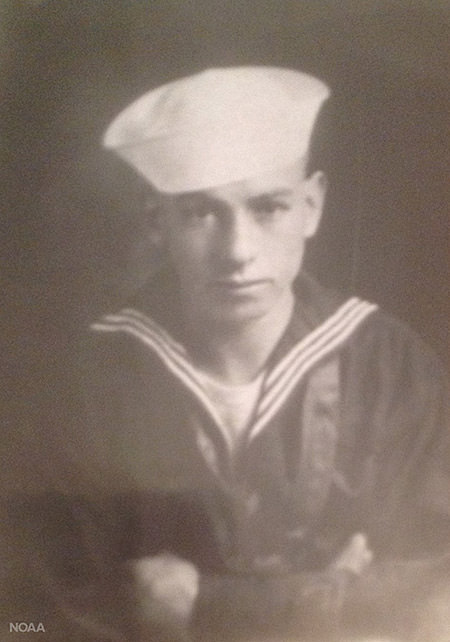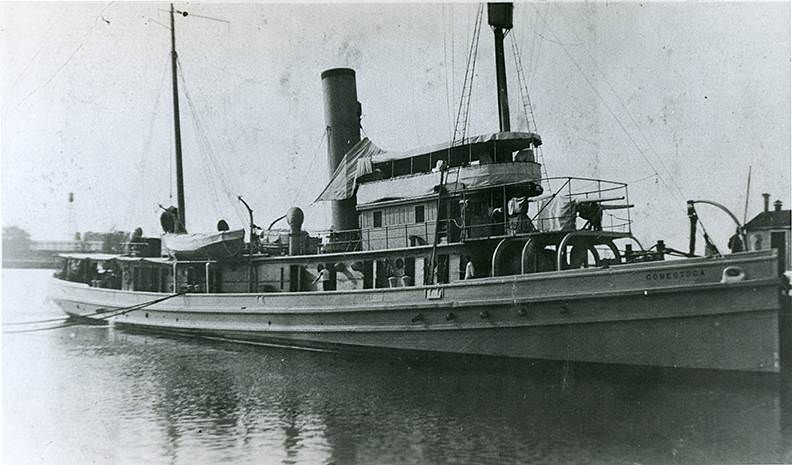Early History
Conestoga wwas built for the Philadelphia and Reading Railroad Company by the Maryland Steel Company shipyard at Sparrow’s Point in Baltimore, Maryland, to tow coal schooner barges. The tug was launched on Thursday, November 12, 1903. Maryland Steel delivered Conestoga to the railroad owner on February 6, 1904. Conestoga hauled coal along the coast to keep the railroad running. According to an article in the trade journal Marine Engineering in 1904, "These tugs are under steam, with but short intermissions, for months at a time. As soon as they bring one tow of barges into port another one for the return trip is assembled and the tug boat starts out to sea with only a few hours' delay for coaling and taking on provisions and stores."
Conestoga Joins the Navy
With the outbreak of World War I and United States' subsequent entry into the conflict, the U.S. Navy purchased Conestoga in September 1917. The Dictionary of American Fighting Ships briefly notes Conestoga's naval career:
Assigned to the Submarine Force, Conestoga carried out towing duties along the Atlantic coast, transported supplies and guns, escorted convoys to Bermuda and the Azores, and cruised with the American Patrol Detachment in the vicinity of the Azores. At the end of the war she was attached to Naval Base No. 13, Azores, from which she towed disabled ships and escorted convoys until her arrival at New York 26 September 1919. She was then assigned to harbor tug duty in the 5th Naval District at Norfolk. Ordered to duty as station ship at Tutuila, American Samoa, Conestoga underwent alterations and fitting out at Norfolk, and cleared Hampton Roads 18 November 1920 for the Pacific. Arriving at San Diego 7 January 1921, she continued to Mare Island 17 February for voyage repairs. Conestoga put to sea from Mare Island for Samoa (via Peral Harbor) 25 March 1921. No further word was ever received from the ship or from her crew of 56. A lifeboat with the letter "C" on the bow was located by the steamship Senator 17 May 1921 in 18°15' N., 115°42' W. but a thorough search of the islands in the vicinity by all available naval and air forces, could locate neither men nor wreckage. Conestoga was declared lost with all her crew 30 June 1921.
Final Voyage of the USS Conestoga
Nov. 18, 1920 - Left Norfolk, VA with U.S. Navy barge #468 for the Pacific
Nov. 23, 1920 - Arrived Guantanamo Bay, Cuba
Dec. 21, 1920 - Passed through the Panama Canal into the Pacific
Dec. 27, 1921 - Arrived Salina Cruz, MX
Jan. 21, 1921 - Arrived at San Diego, CA
Feb. 17, 1921 - Departed for Mare Island, CA
Mar. 25, 1921 - Departed Mare Island for Samoa via Pearl Harbor, HI
June 30, 1921 - Declared lost with all crew members
Discovering Conestoga
During a Maritime Heritage cruise in Greater Farallones National Marine Sanctuary in September 2014, a previously undocumented multibeam sonar target thought to be a shipwreck was investigated. It was found to be an unknown vessel of late 19th or early 20th century vintage whose characteristics matched none of the ships known to have been lost in Greater Farallones National Marine Sanctuary. Utilizing a Remotely Operated Vehicle (ROV) launched from the R/V Fulmar, three survey dives were conducted to characterize the target, which proved to be a 170-foot-long steel-hulled steam-powered oceangoing tug.
The wreck was indeed a "mystery" and its discovery was announced with other wrecks discovered as part of the 2014 survey. The wreck was identified as USS Conestoga after reviewing historical accounts of tugs that departed the Golden Gate and were never seen again and a detailed analysis of the "mystery" tug's features. A subsequent mission to the wreck in October 2015 provided additional information on the site with selective ROV penetration of the hull and careful examination of diagnostic features which included a 3-inch/50 caliber gun.
James Delgado, Director of Maritime Heritage for NOAA's Office of National Marine Sanctuaries, explains the importance of the discovery of the USS Conestoga.
Crew
Photos Credit: U.S. Naval History and Heritage Command
- Wilfred M. Aasgard, Seaman Second Class
- Lee Joseph Alleman, Seaman
- Joseph Harold Allen, Seaman
- Charles Joseph Balint, Seaman
- Alias Steven Benard, Seaman
- Sylvester Craig Blalock, Machinist Mate
- Joseph Bodie, Seaman
- Marvin Henry Bower, Fireman First Class
- Arthur Brignac, Seaman Second Class
- Nelson Eugene Burkhart, Quartermaster Third Class
- Henry Grady Butler, Fireman Second Class
- Russell R. Crabtree, Third Class Fireman
- Joe Earle Davis, Engineman Second Class
- Charles Depiante, Electrician Third Class
- William Jesse Dill, Engineman First Class
- William Joseph Donovan, Shipfitter Second Class
- James Flynn, Water Tender
- William Rudolph France, Fireman First Class
- Edward Bernard Anthony Goodin, Second Machinist Mate
- Roy Evart Hoffses, Boatswain
- Hans Jensen, Fireman Second Class
- William Walter Johnson, Fireman First Class
- Ernest Larkin Jones, Lieutenant
- George Franklin Kaler, Chief Machinist's Mate
- Edwin Peter Kortis, Seaman
- Joseph Matthew Krueger, Yeoman First Class
- Eryle Bond Laverick, Fireman Third Class
- Theodore Marius Liisberg, Machinist's Mate Second Class
- Louis Arthur Liscomb, Machinist
- William Thomas Manchester, Quartermaster Third Class
- Louis Anthony Marchione, Fireman Third Class
- Clarence Leroy McIlwain, Seaman
- Martin Phillip McKeigh, Quartermaster First Class
- Perry Lee McNett, Machinists' Mate First Class
- Willie Oblige Murray, Ships's Cook Third Class
- Wallace Pearl, Mess Attendant Third Class
- Wendell Plummer, Seaman Second Class
- John Wesley Powell, Chief Carpenter's Mate
- Tony Powers, Fireman First Class
- Thomas Cleary Quinn, Pharmacist's Mate First Class
- John Leo Reilly, Electrician
- Harvey Herbert Reinbold, Boatswain
- Bernhardt W. Schoenfeld, Seaman Second Class
- Joseph Lawrence Shetzline, Fireman Second Class
- Fred Shook, Seaman Second Class
- Harry Benjamin Shue, Ship's Cook Third Class
- Wilbur Standley, Ship's Cook Third Class
- Bledsoe Sherman Toms, Fireman First Class
- Arber Bryan Towery, Ship's Cook Fourth Class
- William Raymond Wallace, Gunner's Mate First Class
- Charles Ingerson Westover, Chief Water Tender
- Hugh William White, Coxwain
- Benson Charles Williams, Gunner's Mate Third Class
- Edward Wilson, Mess Attendant First Class
- James Monroe Wooten, Jr., Hospital Apprentice First Class
- Elias Melvin Zimmerman, Chief Boatswain's Mate


Resources
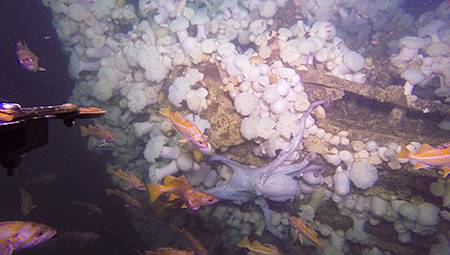
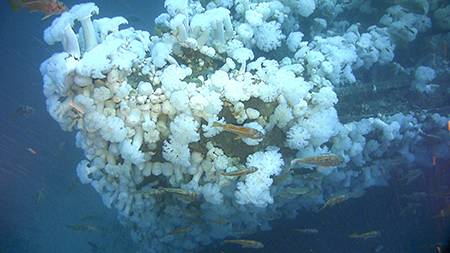
Additional photos and video
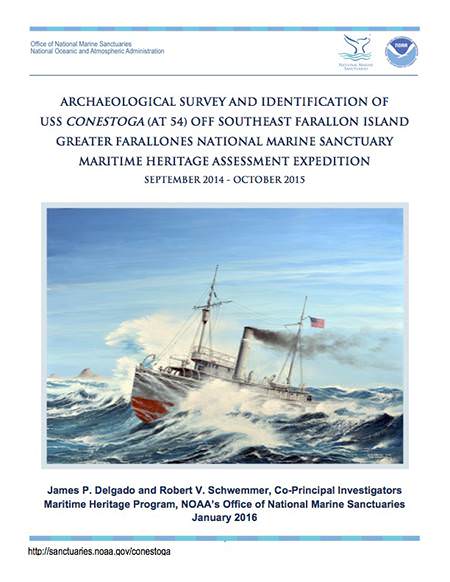
Archaeological report on the discovery of USS Conestoga (AT 54).
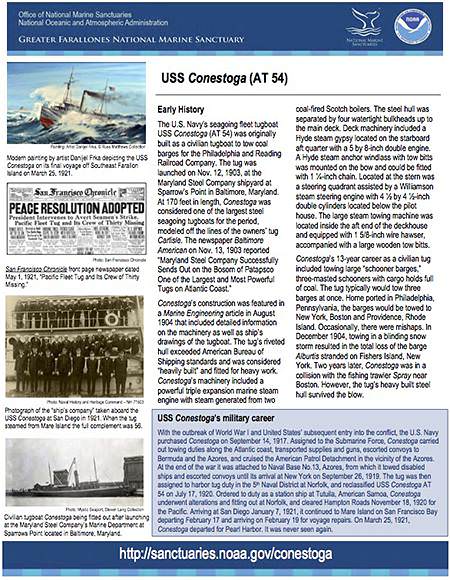
USS Conestoga (AT 54) fact sheet
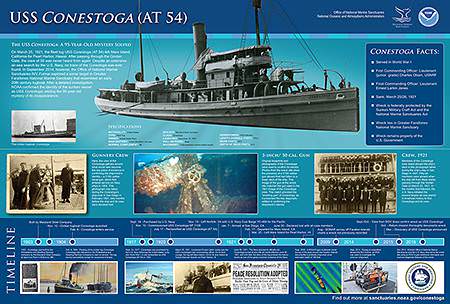
Poster of the USS Conestoga (AT 54)
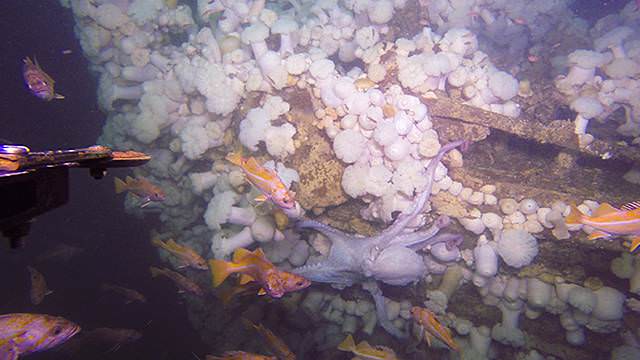
The USS Conestoga: "A tangible reminder of who we are as a nation"
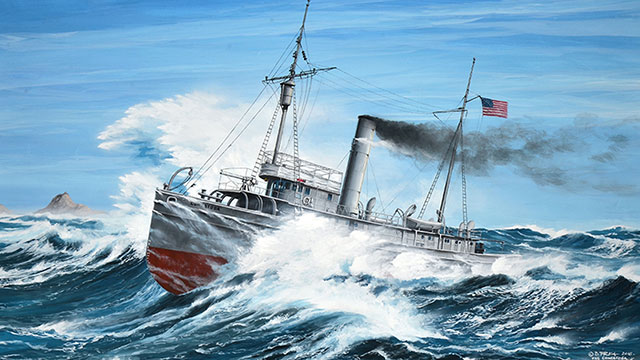
Solving a Century-Old Riddle: Discovering the Wreck of the USS Conestoga

